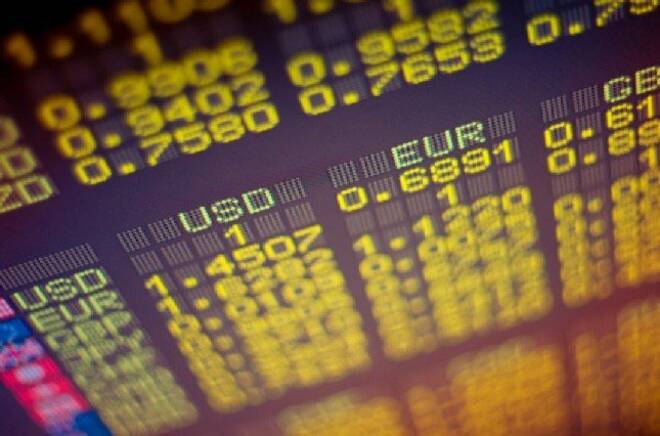Advertisement
Advertisement
The EUR and USD in Focus, with GDP Figures in the Spotlight
By:
The Dollar managed to face on Thursday, with a 0.2% gain off a 14-month low, with opportunistic buying at such lows coupled with better than expected June
The Dollar managed to face on Thursday, with a 0.2% gain off a 14-month low, with opportunistic buying at such lows coupled with better than expected June durable goods orders, supporting Treasury yields following release of the data, which showed durable goods orders surging a whopping 6.5%.
Business investment looks to have picked up in the 2nd quarter and we could see today’s GDP numbers come in ahead of forecast, which would see the markets reverse its view on FED monetary policy, the Dollar having tumbled following Wednesday’s FOMC statement and lack of commitment to a firm data on beginning to sell-down the balance sheet.
Just when you think the Dollar’s done, data out of the U.S manages to catch the markets off-guard, the question now being whether the markets are prepped for solid GDP numbers for the 2nd quarter, the numbers due out this afternoon.
Outside of the macro, we’ve seen a resurgence in oil prices through the week, following the Monday OPEC meeting and continued fall in U.S inventories, which will certainly be a positive for headline inflation numbers, the FED more likely to consider the effects of crude oil prices on inflation than the ECB, which focuses more on core figures.
As things stand, it feels as though the markets are in limbo, with sentiment towards central bank monetary policy continuing to shift. Today’s GDP numbers out of France, Spain and the U.S could begin to provide a clearer picture on what to expect in the months ahead, from the ECB and the FED in particular, while there’ll likely be plenty of uncertainty going into next week’s MPC meeting, MPC members and the BoE Governor having provided little guidance following the hawkish commentary of late.
Macroeconomic data out of the UK this morning was limited to house price index figures, which are unlikely to have a material impact on the BoE’s view on monetary policy, which leaves the Dollar and the EUR in focus through the day, with stats out of the Eurozone including French consumer spending figures for June, prelim July inflation figures, together with the GDP numbers out of France and Spain.
Expectations have been for the French and Spanish economies to accelerate in the 2nd quarter, which will be in line with the IMF’s revised projections for growth, anything disappointing certainly expected to weigh heavily on the EUR, as the market will take this as a case for the ECB to hold steady on policy over the near-term. On top of the GDP figures, the prelim inflation numbers will need to hold steady, particularly when considering the fact that Draghi and the team have acknowledge the improved economic outlook, the issue continuing to inflation.
While the EUR will find direction through the European session, it’s going to boil down to the U.S GDP numbers this afternoon, with the finalized July Michigan Consumer Sentiment numbers unlikely to have a material influence.
Trade data and business investment figures point to a Dollar bounce back off the GDP numbers, but it’s going to boil down to the numbers, the EUR – USD battle certainly going the EUR’s way for now, with France’s GDP numbers this morning in line with forecasts, recording a pickup in growth in the 2nd quarter, with Macron expected to deliver more.
At the time of the report, the Dollar Spot Index stood at 93.814, down 0.05%, with the EUR up 0.19% at $1.16994, the positive French GDP numbers providing support ahead of the European session.
About the Author
Bob Masonauthor
With over 20 years of experience in the finance industry, Bob has been managing regional teams across Europe and Asia and focusing on analytics across both corporate and financial institutions. Currently he is covering developments relating to the financial markets, including currencies, commodities, alternative asset classes, and global equities.
Did you find this article useful?
Latest news and analysis
Advertisement
